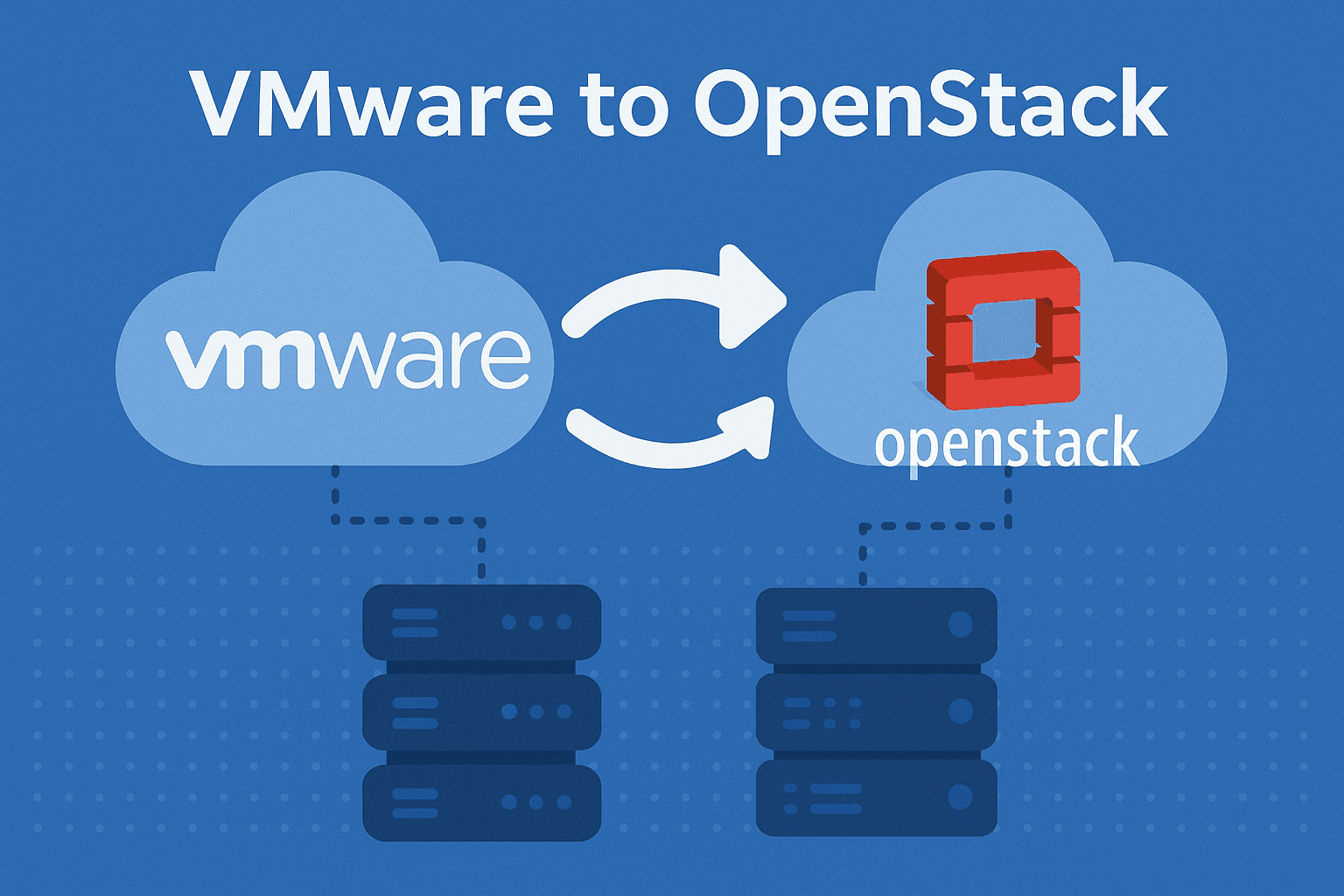
Why to Migrate from VMware to OpenStack
In recent years, organizations have increasingly explored alternatives to VMware’s virtualization platform, especially following Broadcom’s acquisition of VMware in 2024. Many IT leaders have noted a rise in demand for migrating from VMware to more flexible, open-source platforms like OpenStack. Companies are seeking solutions that offer cost savings, better scalability, and freedom from vendor lock-in.
This article provides a high-level overview of VMware and OpenStack, discusses the key drivers for migrating, compares their licensing costs, and outlines the benefits of OpenStack over VMware. We also consider how this migration can apply across various industries from small hosting providers to telecoms and AI-heavy workloads, and conclude with a summary and call-to-action for organizations considering the move.
VMware and OpenStack Overview
VMware: VMware refers to a suite of proprietary virtualization and cloud infrastructure products that have long dominated enterprise data centers. VMware’s core platform (e.g., VMware vSphere) provides robust server virtualization and integrated management tools for running multiple virtual machines on physical servers. It is known for its reliability, user-friendly management interface, and comprehensive support network. However, VMware operates within a closed, proprietary framework, organizations must pay licensing fees to use its software, and this can lead to being locked into VMware’s ecosystem.
OpenStack: OpenStack is an open-source cloud platform designed for building private and public clouds. It includes a collection of tools and services that manage compute, storage, and networking resources in a data center. OpenStack provides Infrastructure-as-a-Service (IaaS) capabilities, allowing users to deploy resources through self-service portals. Its modular architecture and open-source nature allow for high adaptability and scalability, while avoiding vendor-imposed restrictions and licensing fees.
Key Drivers for Migrating from VMware to OpenStack
Cost Savings: OpenStack eliminates VMware’s hefty licensing fees, making it more cost-effective, especially at scale.
Avoiding Vendor Lock-In: OpenStack offers freedom from proprietary constraints, allowing integration with diverse technologies.
Flexibility and Customization: Its modular design allows organizations to tailor their environment to unique needs.
Scalability: OpenStack is built for horizontal cloud-scale expansion on commodity hardware.
Licensing Changes by Broadcom: VMware’s shift to per-core subscription pricing has sharply increased costs for many organizations.
Strategic IT Control: OpenStack enables a private cloud model with full data and infrastructure control.
Licensing Costs: VMware vs. OpenStack
VMware: VMware’s licensing is commercial, formerly per CPU socket, now per CPU core with a minimum of 16 cores. This model has significantly raised costs, especially with the shift to subscription-only offerings.
OpenStack: OpenStack is released under the Apache License, meaning the software is free to use with no licensing fees. Organizations only incur costs for infrastructure, staff, or optional support services. This provides significant savings and flexibility in scaling infrastructure without added license costs.
VMware has a high-cost, license-bound model; OpenStack is license-cost free, offering a major financial advantage.
Benefits of Using OpenStack Over VMware
Cost Efficiency: Avoid license costs and use commodity hardware.
Flexibility: Customize infrastructure and integrate best-of-breed technologies.
No Vendor Lock-In: Open standards and APIs provide independence.
Cloud-Native Scalability: Built to scale horizontally for multi-tenant cloud operations.
Community and Innovation: Rapid innovation and support through a global open-source community.
Hybrid and Multi-Cloud Ready: Integrate with public clouds and build flexible architectures.
Modern Workload Support: Supports containers, bare metal, and AI/HPC workloads natively.
OpenStack’s Applicability Across Industries
Hosting and Cloud Service Providers: Build competitive, self-service cloud offerings without license fees.
Telecommunications (Telco): Implement NFV with carrier-grade flexibility and cost efficiency.
AI and HPC Workloads: Achieve fine-tuned performance, GPU optimization, and infrastructure control.
Other Sectors: Financial, academic, and research institutions benefit from OpenStack’s flexibility and cost model.
Migrating from VMware to OpenStack offers organizations significant cost savings, control over infrastructure, and access to modern, cloud-native capabilities. While VMware remains a polished and powerful platform, rising costs and licensing changes are pushing businesses to seek open alternatives.
OpenStack provides a customizable, license-free path forward with broad community support and proven success across industries. The migration journey requires planning and expertise but can begin with small-scale pilots and grow organically.
If your organization is evaluating cloud infrastructure options, now is the time to assess your VMware costs, explore OpenStack’s capabilities, and consider a phased migration approach. Engage your technical and business teams, and consult OpenStack providers to support your transition.
Take control of your cloud future – explore the freedom and flexibility of OpenStack today.
